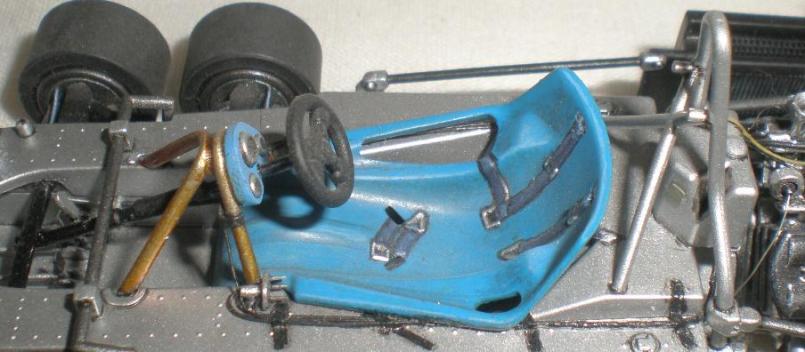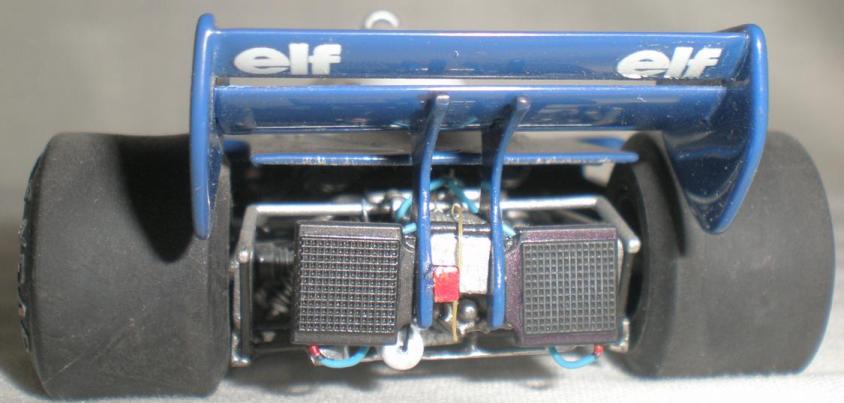
In 1976, the Tyrrell team came up with the Project34. Another Derek Gardener design, and arguably, one of the two most radical entries ever to succeed in F1 ( the other being the Brabham BT46B "Fancar").
With most F1 teams running the same Ford Cosworth DFV engine performance gains had to be found in other places. For Gardiner it was to improve handling, stability and straight line speed. His research led him to design a car with four small front wheels tucked inside the body.
The P34’s achieved a 1-2 finish at the Swedish GP in 1976 and they did have some other good results, but became less and less competitive due to lack of tyre development. While other teams on the standard tyres benefitted from tyre development Tyrell, being the only people running 10inch wheels, fell behind. Worse was the fact that the rear tyres were being developed and as they became quicker the car became more unbalanced.
Proof of this is found in the Thoroughbred Grand Prix series were Avon spent a considerable amount of time and money to provide tyres for Simon Bulls car driven by Martin Stretton. They won the 2000 TGP and this feat was repeated by Mauro Pane driving a sister P34 in 2008.
For 1977 a new sleeker body was designed and made the car look much more appealing. Unfortunately it added to one of the cars biggest problems, a problems that was never successfully overcome, brake cooling. This was a particular problem at the front and many different attempts were made to improve airflow to the brake discs, all the most effect methods led to increased drag, and a reduction in straight line speed, undermining the concept the small front wheels were supposed to represent. The new body work also covered the engine area and diverted air flow away from the rear brakes causing a problematic increase in their temperatures too.
The 1977 season was very disappointing for the Tyrrell team, three third places were their best results in a season where retirements outnumbered finishes and bought only 27 points in total. 6th in the constructors championship. Two of these podiums fell to Patrick Depailler, in South Africa and Japan and his points haul of 20 considerable overshadowed that of his team mate Ronnie Peterson.
The Matchbox kit is very good having a wealth of detail even at 1/32nd scale. However the model has been detailed to a great degree with many scratch built parts.



1/32nd scale kit.
Built by Ian.





The Matchbox F1 range only ever included the Tyrrell and Surtees kits, although earlier grand prix and racing cars were produced. All their car kits were nicely detailed if at times a little fiddly. Most of the annoying construction problems were due to the amount of detail they tried to cram into the smaller scale of 1/32nd.
This one is the better of the two and so well detailed it desperately needed the proper attention due to it. Ian spent two months scratch building extra details, hollowing out the exhausts and air in takes and wiring up the engine. The body is sprayed with Halfords car paints.
One of the frustrating parts of modelling is spending moths detailing a car only to find the plastic of the body is so over scale in thickness that the covers won’t fit on any more!
RETURN TO -
